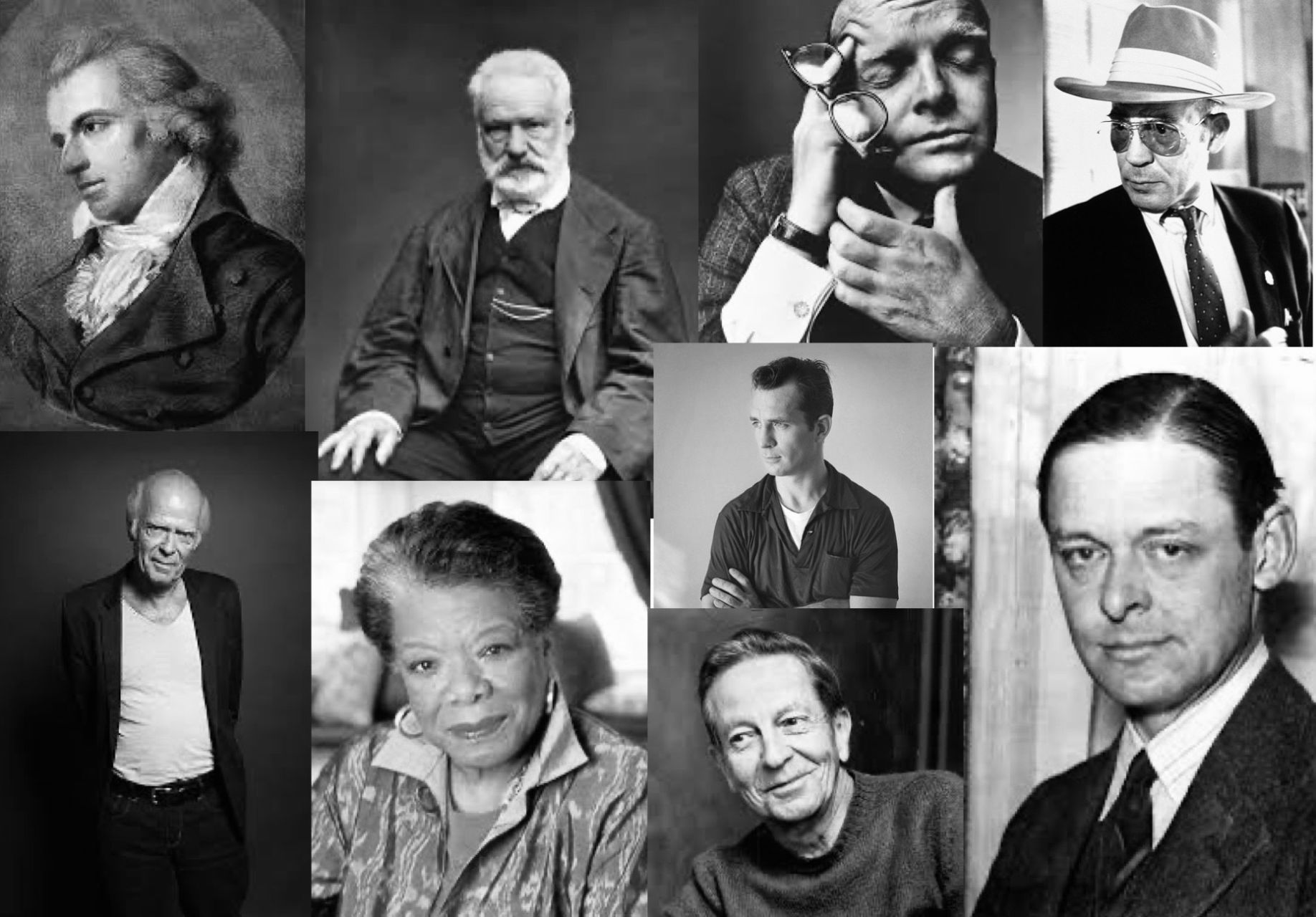
After the disciplined monks, we turn to the eccentrics. These writers had no fixed schedules or word quotas. Their routines were a blend of magic, whim, and, at times, self-sabotage in its most creative form. Yet, despite it all, they made literary history.
Literature loves outsiders. But what it cherishes most are organized outsiders—those who turn their strangeness into a narrative engine, their questionable lifestyles into bursts of staggering productivity. This second part focuses on writers who today might be considered, depending on one’s perspective, either misunderstood geniuses or clinical cases. Their approach to writing was less like an Excel spreadsheet and more like a shamanic invocation. Here, one writes naked, douses oneself in the scent of rotting apples, rents a distraction-free room, or composes between lines of cocaine. Strange? Certainly. Ineffective? Not at all.
Friedrich von Schiller, the Sensitive Nose
Weimar, 18th century. Friedrich von Schiller—poet, philosopher, playwright, and proud possessor of a prominent nose—had a peculiar habit. He kept rotting apples under his desk while writing. Not for penance, but because he believed their scent stimulated his creativity. Some explain this quirk physiologically (an olfactory trigger for focus), while others see it as self-inflicted sensory torment. Regardless, The Robbers was born in an atmosphere worthy of a compost heap.
Victor Hugo, the Naked Writer
Victor Hugo, the ultimate Romantic author, knew how to cast off convention. Facing a deadline for Notre-Dame de Paris, he locked away his clothes, trapping himself naked in his study. The blank page became his only exit. Discipline, it seems, is but another lock on the door of temptation. His publisher, thrilled with the result, wisely skipped nudity as a contract term.
Truman Capote, the Reclining Prince
Truman Capote had a weakness for plush sofas, cigarettes, sweet liquors, and flexible hours. He wrote exclusively lying down—often in bed or on a couch, a drink always within reach. “I’m a horizontal writer,” he liked to say. And indeed, Breakfast at Tiffany’s and In Cold Blood came to life between puffs of smoke and sips of white wine. Capote proved that what matters isn’t the posture of the body, but the state of the soul.
Hunter S. Thompson, Chaos at the End of the Night
If any writer embodied excess, it was the father of gonzo journalism. Hunter S. Thompson’s daily routine was so surreal it could have been scripted by Terry Gilliam: cocaine at 3 PM, whiskey at 5, LSD with dinner, then writing from midnight to 6 AM—all interspersed with champagne baths and Dunhill cigars. A walking explosion—with a notebook in hand. Yet Fear and Loathing in Las Vegas, despite its madness, is a masterpiece of hallucinatory lucidity. Proof that chaos, at times, writes better than order.
Pascal Quignard, the Attic Hermit
Back to calm. Well, sort of. Pascal Quignard writes at night, alone under the eaves, by hand, using a red pen. He edits on paper before typing the manuscript in the afternoon. And most notably: once his books are published, he burns all preparatory drafts. Not out of vanity, but from a need for erasure, for stripping things away. His published work is the only version he wants to leave behind. Everything else must disappear. Writing as a mystical asceticism, purification by fire.
Maya Angelou, the Hotel Hermitage
Maya Angelou needed a neutral space to write. Not her home, not a café, but a hotel room—rented for the day, devoid of decoration or distraction. She locked herself in from 7 AM to 2 PM, armed only with a notebook, a Bible, some sherry, and occasionally a crossword puzzle. The hotel became her temporary monastery, where each morning, the trial of creation began anew—far from the clamor of the world.
Jack Kerouac, the Endless Scroll
A leading figure of the Beat Generation, Jack Kerouac rejected the very idea of interruption. To write On the Road, he taped together sheets of paper to form a 120-foot scroll, which he fed into his typewriter. The result: an unbroken stream of text, without margins or paragraph breaks—a pure, amphetamine-fueled verbal flood. A literary performance that embodied his refusal of limits and imposed formats.
T.S. Eliot, the Spectral Dandy
T.S. Eliot possessed a distinctive flair for theatrics. It is said that he powdered his face green before writing, as though stepping into a role. Was this ritual meant to embody the melancholy of The Waste Land, or simply to ward off visitors? History offers no answers. Yet, this spectral makeup adds a baroque touch to the image of the austere poet: Eliot, the writer who dressed to compose.
John Cheever, the Disheveled Corporate Worker
John Cheever lived in a New York skyscraper, where each morning he descended to the basement utility room to write. The twist? He did so clad only in his boxers. This partial nudity was not a whim, but a personal routine—somewhere between comfort and quiet rebellion. Much like Victor Hugo, Cheever seemed to understand that, for writing to be intense, one must strip away the layers of social convention—sometimes quite literally.
These authors, each in their own way, turned eccentricity into a guiding compass. Whether writing naked, drunk, horizontal, or cloaked in green powder, their sole rule was a steadfast loyalty to the methods they had crafted—much like the worlds they created, teetering on the brink of reality and delicate madness.


Comments